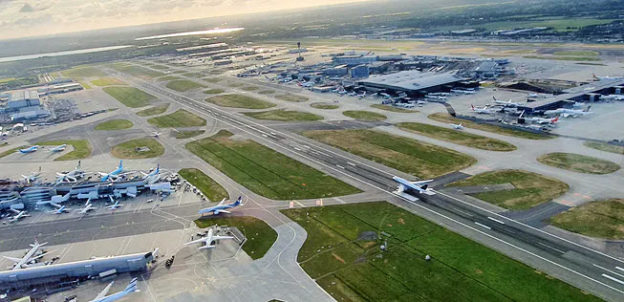Mid-air collisions are a serious threat in general aviation. Pilots are responsible for visual separation through see-and-avoid, but sighting issues remain the most common cause of Airprox events. Electronic Conspicuity (EC) devices have recently become common in GA and offer a means of supporting see-and-avoid. This research project reviewed the current literature and used a wide-ranging survey supported by several live-flights using eyetrackers to investigate the human factors issues related to the current EC situation.
Over 2000 survey responses were received (three-quarters from pilots of fixed-wing GA aircraft <5700kg). About 85% reported using EC of some sort (over and above a standard transponder), many used two or more EC devices and there were seventy-nine different EC combinations in use by the sampled pilots. The overall mean chance of detecting and being detected was approximately 50% (based on the sample only) but highly variable across EC combinations. Due to limitations, the real figure is almost certainly lower. Nevertheless, pilots overestimate the probability by about 10 to 20%. They are generally more confident about being detected than about detecting others. Pilot estimates of probability were found to be unrelated to the calculated figures for their combinations. This indicates a low understanding of detection and detectability likelihoods. This was reinforced by pilot opinions of fellow pilots; suggesting only 50% of pilots understand their devices.
Not only do pilots overestimate the detection coverage of their EC, but many appear to use EC in a way that assumes complete coverage (despite knowing that it does not). On seeing an undetected aircraft, 43% admitted feeling negative emotions (including anger), suggesting an unconscious expectation of full coverage. Many pilots commented on the ‘false sense of security’ that EC can generate, and some comment on feelings of anxiety. Nevertheless, when asked if they believed their device had saved them from a near-miss/collision, three-fifths of those who answered believed it had done so at least once.
A deeper analysis found that pilots are integrating EC more widely into the overall flying management task. Many pilots appear to use EC tactically and strategically to act, usually beyond visual range, to reduce future threats. Furthermore, some pilots report situations that imply that EC is factored into some risk-based decision-making. Evidence of EC ‘reliance’ was also found, with some pilots saying they feel very uncomfortable flying without EC. The risk of this is clear where the probability of detecting other traffic on EC is only 50% on average.
The largest issue appears to be a distraction by EC. Themes include distraction from the operational task priorities, unrealistic searches for EC targets, interacting with the device itself, information ‘overload’, and ‘nuisance’ or too many audio alerts (especially in busy and critical areas). Another distraction-related theme was general ‘head-down operation’ and a deteriorating look-out habit. There is a concern about attention becoming systematically focused on EC as a normal part of the overall task.
The survey results suggested a paradox in terms of EC safety and usability: EC appears to be least effective and most deleterious to the task in flight phases and situations where the mid-air collision risk is highest (confirmed by the literature review), such as when in busy areas (circuits, busy airspace, thermals, etc). Pilots report EC being overwhelming and distracting in these situations and many will ignore it (‘cry wolf effect), switch it off, or even decide not to take it at all because of this. Hence in its current form EC is least effective (from a human factors perspective) in situations where it is most needed, and this will remain the case even if coverage and compatibility are substantially increased.
Live flying eye-tracking trials supported many elements of the analysis and uncovered several new themes. During trials, more non-EC visual targets were seen than aircraft showing on EC, confirming the compatibility problems. Visual lookout limitations were supported by eye tracking (E.g. thorough active lookout in the direction of a threatening aircraft (unknown and non-EC) for several minutes failed to see the aircraft at all, despite ideal good conditions. Examples of active lookout were mapped and compared to EC-cued-searching, demonstrating that EC-cued searching can restrict lookout considerably as emerged as a concern in the survey. Realistic visual range was confirmed to be about two miles, and up to three in perfect circumstances. The impact of a pilot conducting a visual search for an EC target well beyond the visual range was demonstrated to be a threat. Two trials showed examples of pilots resolving information from two aircraft (radio and EC) into one (a phenomenon termed ‘2-in-1’), and in one case concentrating on the EC aircraft at the expense of the other. Source / entire study: ‚GASCo and Jarvis Bagshaw Ltd.‚.




